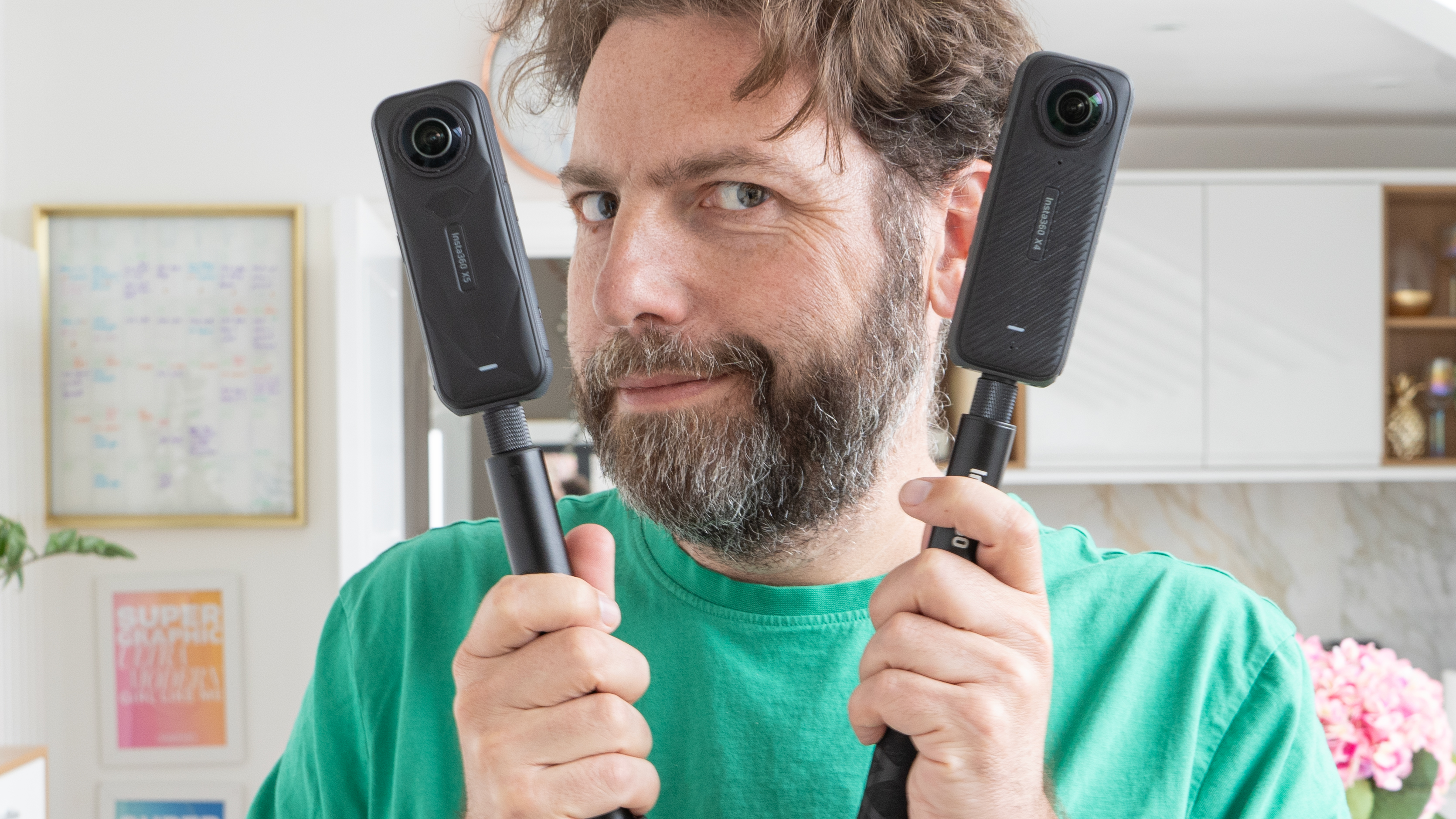Canon EOS R50 vs R50 V: I'll bet cash that you won't guess which camera comes out on top
It's the Canon EOS R50 vs R50 V showdown: which of these compact, capable cameras is the right one for you?
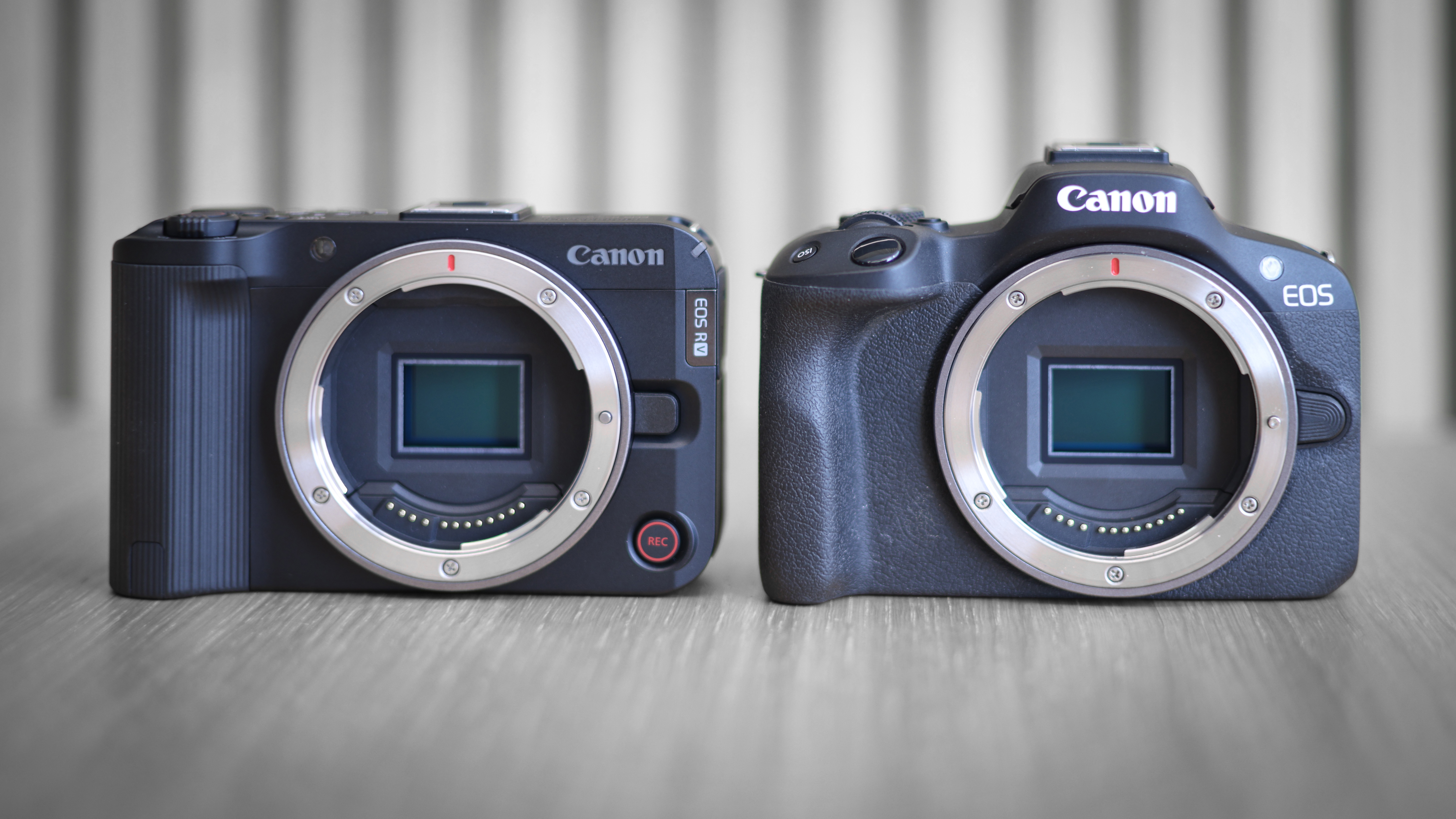
So, the Canon EOS R50 vs R50 V – which is the best one to get? Well, most people will tell you "one's better for stills, the other for video" – but it's nowhere near that clear cut!
The original Canon EOS R50 is, in theory, the one to go for if you're primarily a photographer, while video-first shooters should look to the newer Canon EOS R50 V. However, while that "V" literally stands for "video", the newer camera actually beats the original in the photo specs… but not in ergonomics.
In short, the comparison gets really interesting and the answers aren't as straightforward as you might think – so I'm here to help you figure out which is right for you. Let battle commence; it's the Canon EOS R50 vs R50 V!
Canon EOS R50 vs R50 V: At a glance
| Row 0 - Cell 0 | Canon EOS R50 | Canon EOS R50 V |
Launched | April 2023 | March 2025 |
Sensor | 24.2MP APS-C | 24.2MP APS-C |
Lens mount | Canon RF / RF-S | Canon RF / RF-S |
Autofocus | Stills: 4,503 points, Movies: 3,713 points | Stills: 759 points, Movies: 495 points |
Recognised subjects | Human (eyes, face, head, body), animal (dogs, cats, birds), Vehicle (cars, motorcycles) | Human (eyes, face, head, body), animal (dogs, cats, birds), Vehicle (cars, motorcycles) |
In-body image stabilization | None | None |
ISO range | 100 - 32,000 (exp 51,200) | 100 - 32,000 (exp 51,200) |
Max video resolution | 4K 30p (oversampled from 6K), 4:2:2 10-bit, FullHD 120p | 4K60p (with crop 55% of horizontal area), 4K 30p (oversampled from 6K), 4:2:2 10-bit, FullHD 120p |
Video record limit | 1 hour | 2 hours |
Viewfinder | 0.39-inch, 2.36 million dots | None |
Rear screen | 2.95-inch, 1.62 million dots | 3-inch, 1.04 million dots |
Memory | 1x SD UHS-II | 1x SD UHS-II |
Connectivity | WiFi, Bluetooth, USB-C, microphone jack | WiFi, Bluetooth, USB-C, microphone jack, headphone jack, micro HDMI |
Battery | LP-E17 | LP-E17 |
Dimensions | 116.3 x 85.5 x 68.8 mm | 119.3 x 73.7 x 45.2mm |
Weight | 328g body only / 375g with battery & card | 323g body only / 370g with battery & card |
Canon EOS R50 vs R50 V: Price
• Canon EOS R50 – $639 / £749 / AU$1,399
• Canon EOS R50 V – $649 / £729 / AU$1,169
• Canon EOS R50 + kit lens – $799 / £859 / AU$1,249
• Canon EOS R50 V + kit lens – $849 / £959 / AU$1,499
• Canon EOS R50 + Creator Kit – $999 / £899 / AU$NA
• Canon EOS R50 V + Creator Kit – $NA / £999 / AU$NA
Body only, the price difference between the two cameras is negligible – depending on region, one is slightly cheaper than the other. However, when it comes to a kit, the R50 comes in more affordable bundles.
The R50 with its kit lens, the Canon RF-S 18-45mm f/4.5-6.3 IS STM, is cheaper than the R50 V with its kit lens, the Canon RF-S 14-30mm f/4-6.4 IS STM PZ. The former is a far more versatile lens, with a greater focal range for photography, while the latter is much more limited but better for video, with its power zoom mechanism and closer focusing.
Depending on your territory, Canon also offers a Creator Kit bundle that adds the HG-100TBR grip and BR-E1 Bluetooth remote, plus the DM-E100 microphone (and, in the UK, a 32GB memory card). In the US this is currently only available for the R50, while in the UK the R50 bundle is £100 cheaper than the R50 V bundle.
Just bear in mind that if you're a creator, the R50 V is almost certainly the better camera for you – so while it's more expensive, that's the bundle to go for.
🏆 Winner: Canon EOS R50
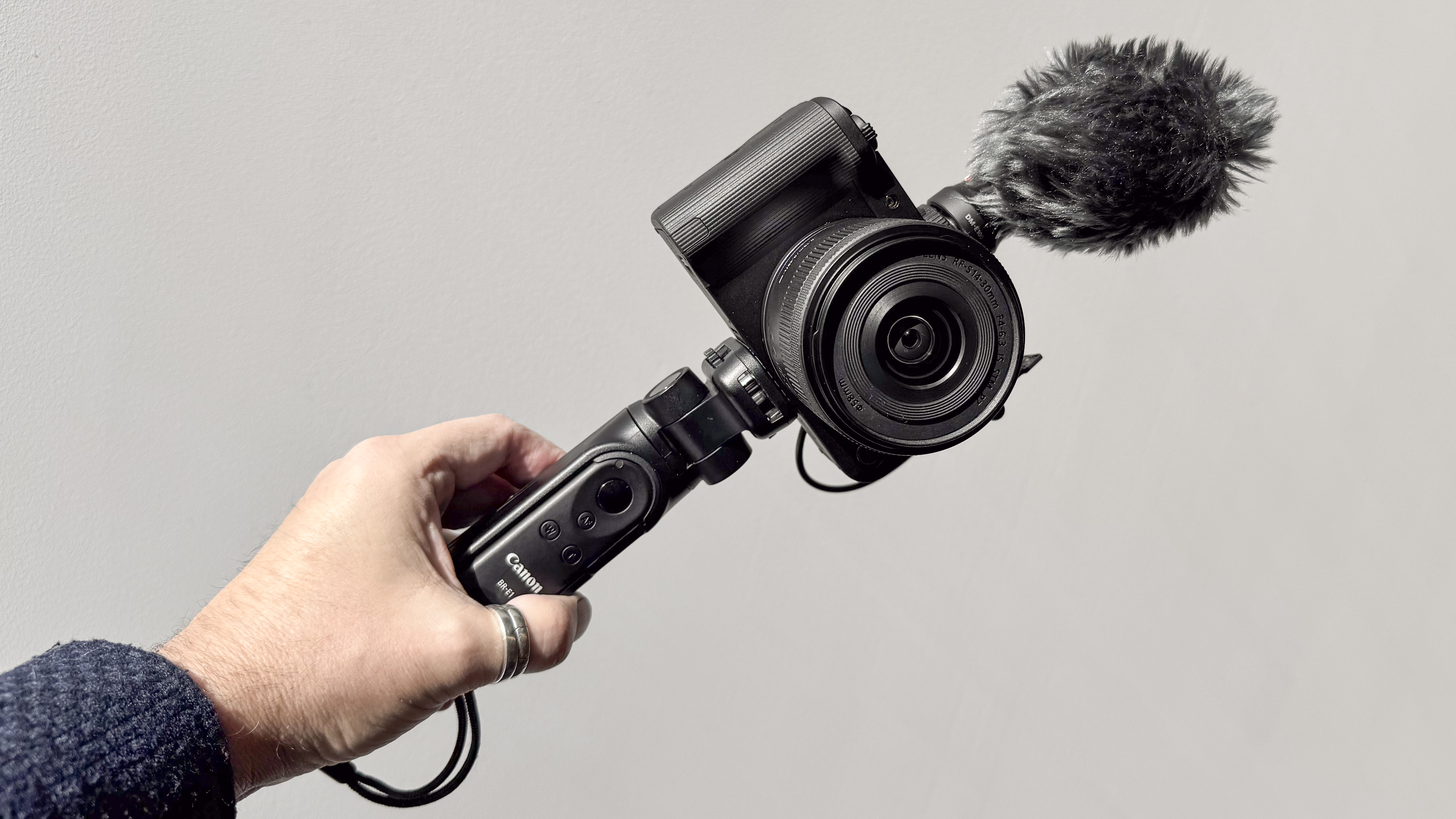
Canon EOS R50 vs R50 V: Design & handling
• Canon EOS R50 – 116.3 x 85.5 x 68.8 mm, 375g (328g body only)
• Canon EOS R50 V – 119.3 x 73.7 x 45.2mm, 370g (323g body only)
While similarly proportioned, these are two very differently designed cameras reflecting their different shooting intentions.
As a primarily photographic device, the R50 has a much chunkier grip for secure handholding, an electronic viewfinder (EVF) for composing your images, a single front exposure dial, a photo-oriented mode dial, a separate shutter button and video record button, a dedicated ISO button, and a horizontally-oriented tripod mount.
As a camera primarily intended for video, the R50 V has a much narrower grip, no viewfinder, a rear exposure dial and a wheel on the back of the camera, a video-oriented mode dial, two record buttons (one on top, one on the front) and both a horizontal and vertical tripod mount.
In addition, when the R50 V is turned vertically, all the menus and shooting information also shift to display the right way up. Where the R50 only has a microphone jack, the R50 V adds a headphone jack and micro HDMI port.
All of which is to say, if you intend to take photographs then the R50 is the clear winner. However, for videography, the ergonomics, controls, display and connectivity options make the R50 V the better option.
🏆 Winner: Tie
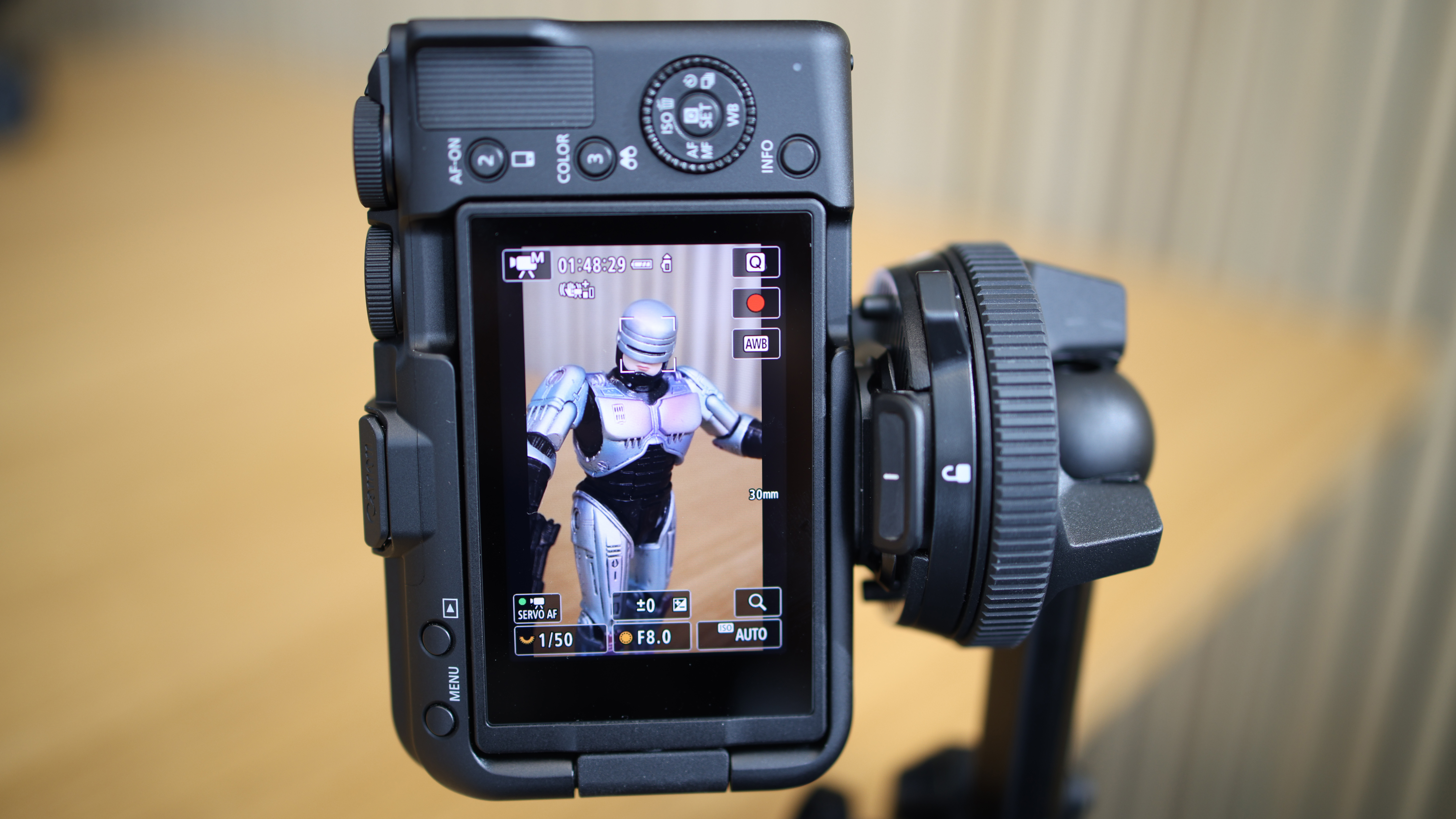
Canon EOS R50 vs R50 V: Photo specs
• Canon EOS R50 – 24.2MP, 12 fps (mech) / 15fps (elec)
• Canon EOS R50 V – 24.2MP, 12 fps (mech) / 15fps (elec)
At first glance, the photo specs are identical. They don't tell the complete story, though, even though both cameras share the same 24.2MP APS-C sensor – so you can expect the image quality itself to be largely identical.
They're powered by the same Dual Pixel CMOS AF II autofocus system, with the same number of AF positions (4,503 for stills / 3,713 for video) driven by matching Digic X processors. However, Canon has optimized the focus system in the R50 V and its overall performance is better for stills as well as video.
Another area where the fine print differs between the bodies is in buffer depth. While both cameras offer continuous shooting speeds of 12 fps via the mechanical shutter and 15fps electronically, the R50 V accepts faster UHS-II memory cards – and so can shoot longer bursts.
In fact, despite being a camera geared towards video, the R50 V can rattle off more than three times as many JPEGs and up to eight times as many RAW files.
That said, the R50 V only has a rear LCD screen while the R50 has an electronic viewfinder. While modern users might actually prefer taking photos using the screen (a la shooting on a smartphone), more traditional photographers value having a finder for better and distraction-free composition – not to mention being able to view your scene when the sun is too bright to see the rear screen.
However, on specs alone, the video camera is actually better at photos!
🏆 Winner: Canon EOS R50 V
| Row 0 - Cell 0 | 12 fps (mechanical) | 15 fps (electronic) |
Canon EOS R50 | 42 JPEGs / 7 RAWs | 28 JPEGs / 7 RAWs |
Canon EOS R50 V | 140 JPEGs / 59 RAWs | 95 JPEGs / 36 RAWs |
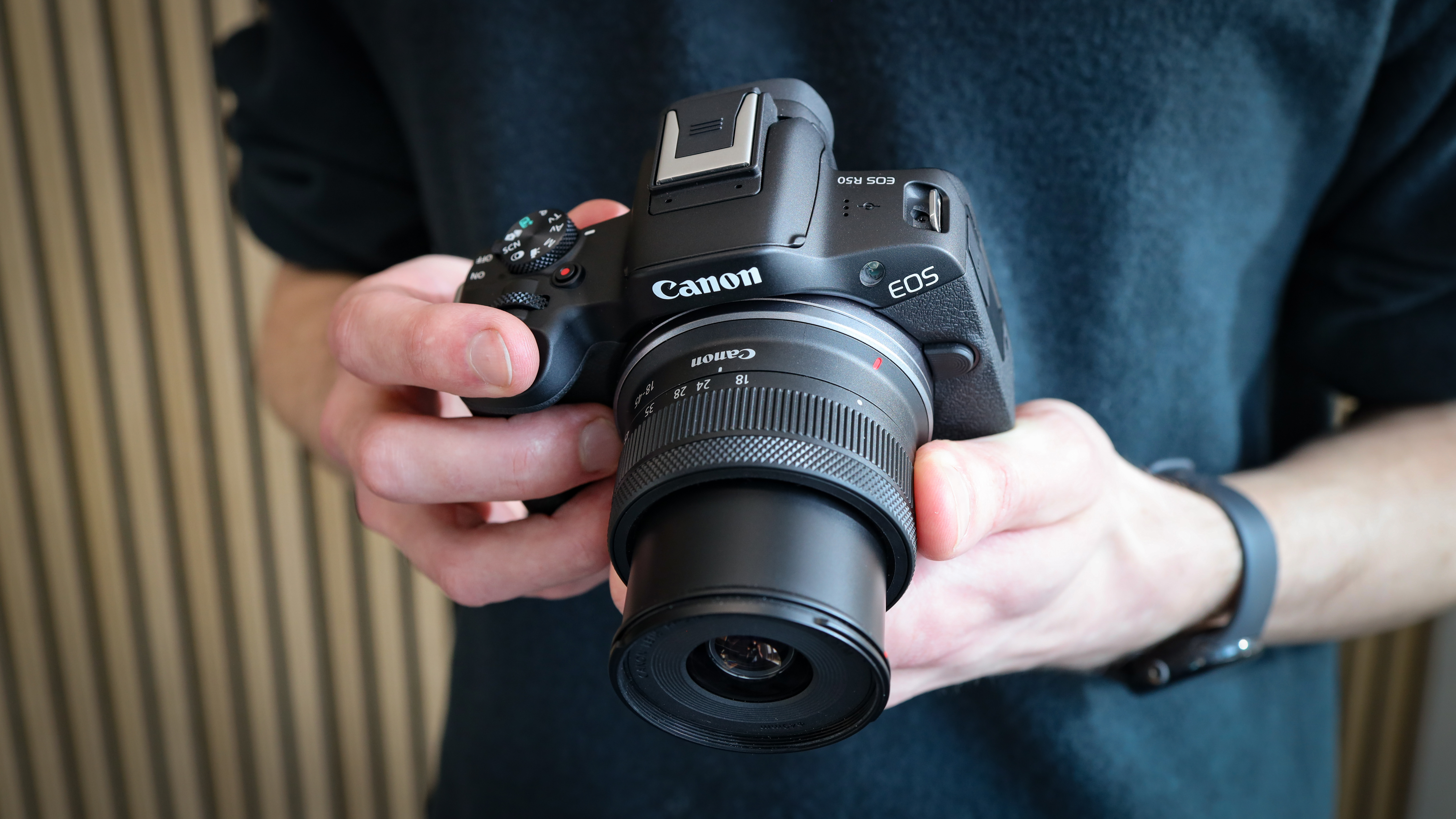
Canon EOS R50 vs R50 V: Video specs
• Canon EOS R50 – 4K 30p, 8-bit 4:2:2, 16-bit 2-ch , 1 hour
• Canon EOS R50 V – 4K 60p, 10-bit 4:2:2, 24-bit 4-ch, 2 hours, CLog3
As you might expect, video is where the key differences lie between the two cameras – and the EOS R50 V absolutely smokes the original.
While both cameras shoot 4K 30p video oversampled from 6K, the R50 V also offers 4K 60p – but note that this incurs a crop (55% of the horizontal viewing area).
Where the R50 maxes out at 8-bit 4:2:2, the R50 V cranks it up to 10-bit and also offers Canon's XF-flavored HEVC as well as the base H.265 coden. And the older model offers HDR PQ, its newer brother also boasts Canon Log 3, Canon709, Cinema Gamut and HLG profiles.
Both cameras boast features like live streaming, timecode, zebras, aspect markers and horizon correction, the R50 V adds tally lamps, false color, vertical video (with vertical menus and on-screen information), along with color filter and Look Files.
When it comes to audio, the R50 offers 16-bit 2-channel recording compared to the R50 V's 24-bit 4-channel capture (though only when using an external microphone). Each camera has a mic jack, but the R50 V throws in a headphone jack and micro HDMI port.
🏆 Winner: Canon EOS R50 V
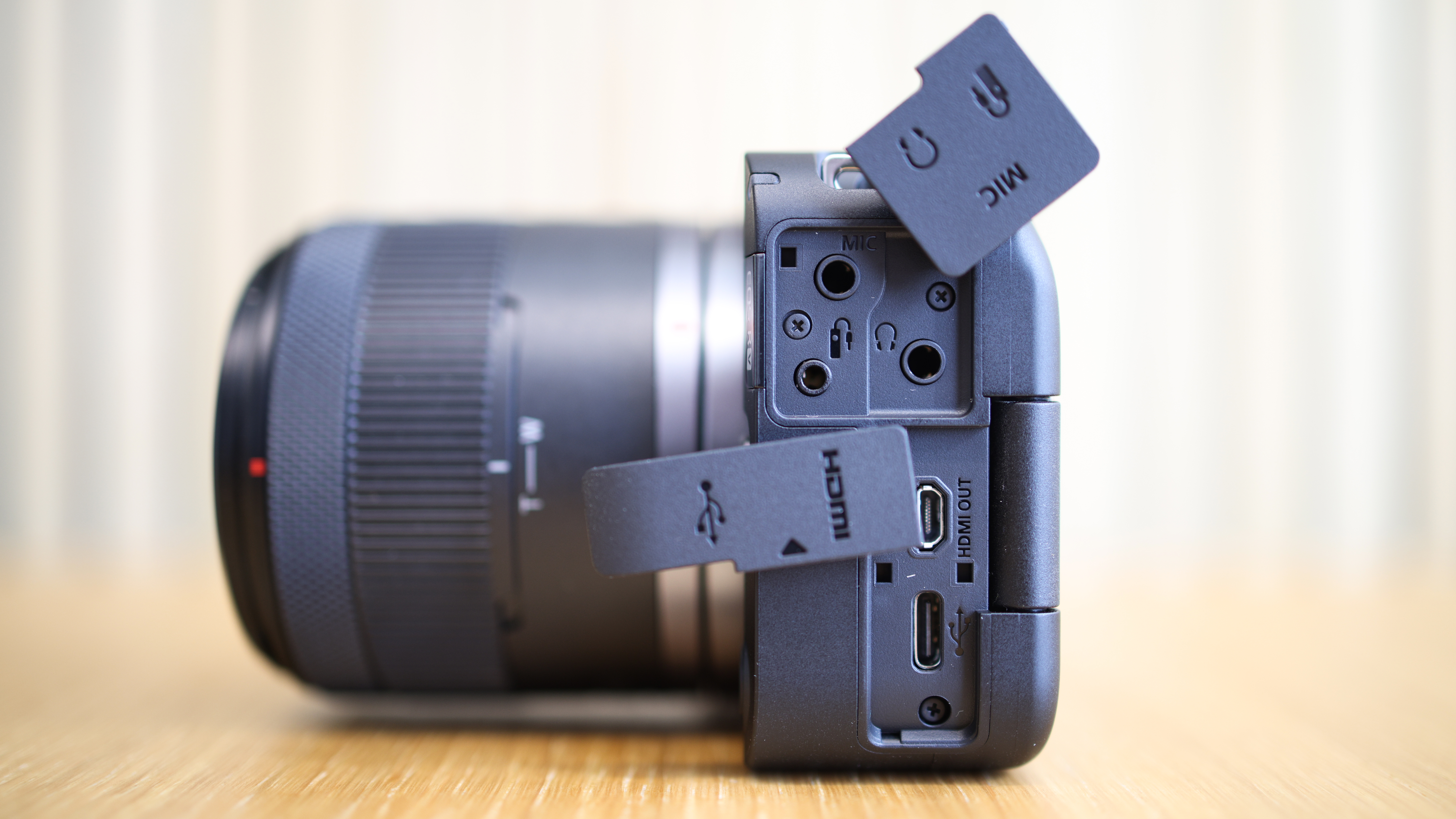
Canon EOS R50 vs R50 V: Verdict
When I first compared the two cameras, I thought this one was a no-brainer: the R50 is obviously the better stills camera and the R50 V is clearly the one for video.
But it ain't that straightforward.
On the one hand, the R50 has a viewfinder and superior ergonomics for handheld photography. And most traditionalists will tell you that a camera has to have a viewfinder to be considered a true photographic body. And certainly, having an EVF makes it possible to shoot in bright conditions (and check your pictures) if the rear screen isn't visible.
At the same time, many modern shooters have come up in the smartphone era and mainly – perhaps only – shoot using the rear screen. The truth is, a lot of younger shooters just don't care about viewfinders – and I personally own three photographic cameras that don't have an EVF, and it's never caused me a problem.
But at the end of the day, this is the only reason to choose the R50: because you want a viewfinder and a body that's better molded to your hands. But in terms of specs, the R50 V is a superior camera in every possible way – including its photo specs.
Let me put it this way: even though I primarily shoot stills, if I was choosing between them and spending my own money, I'd go for the R50 V without hesitation.
🏆 Winner: Canon EOS R50 V

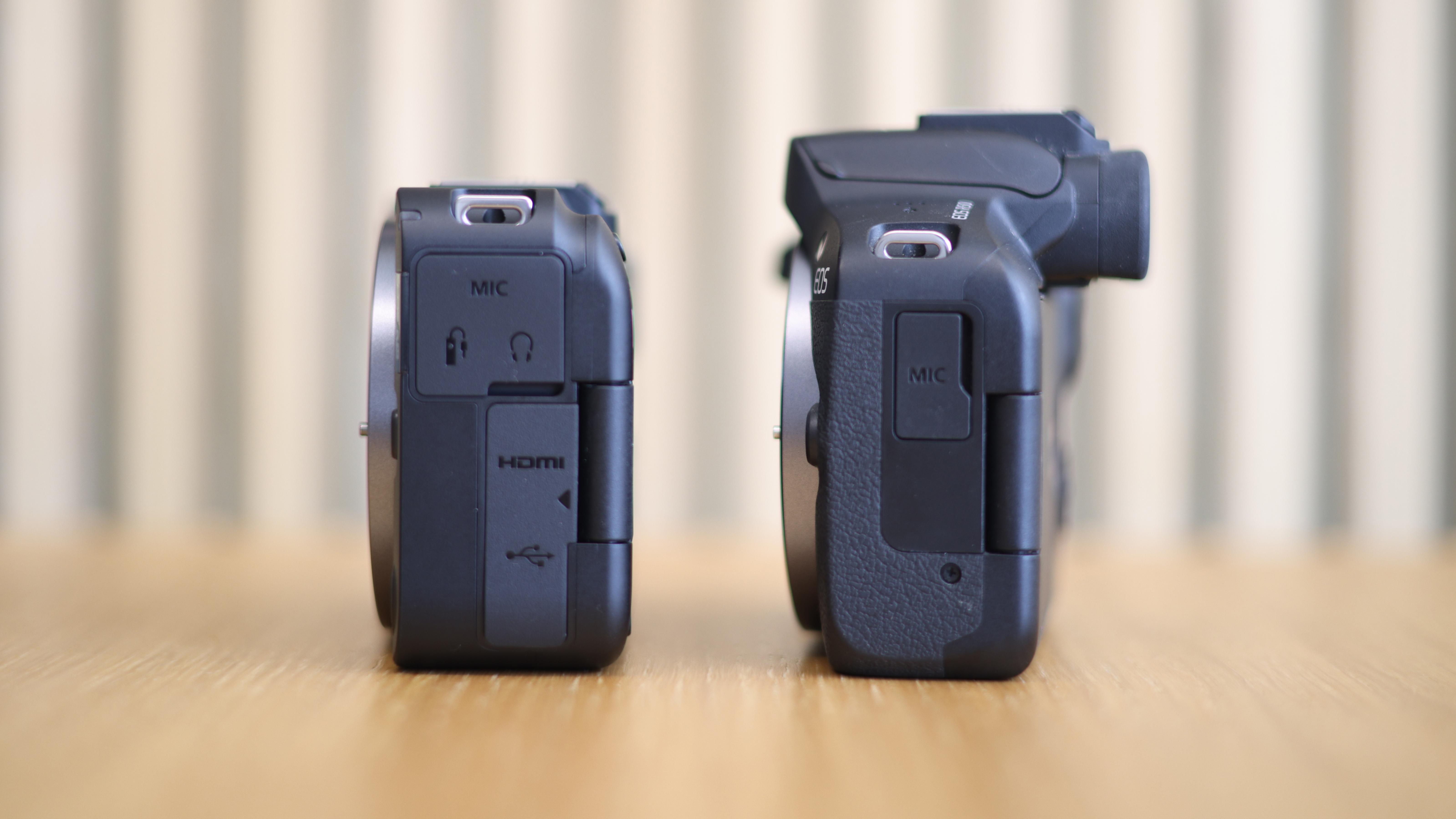
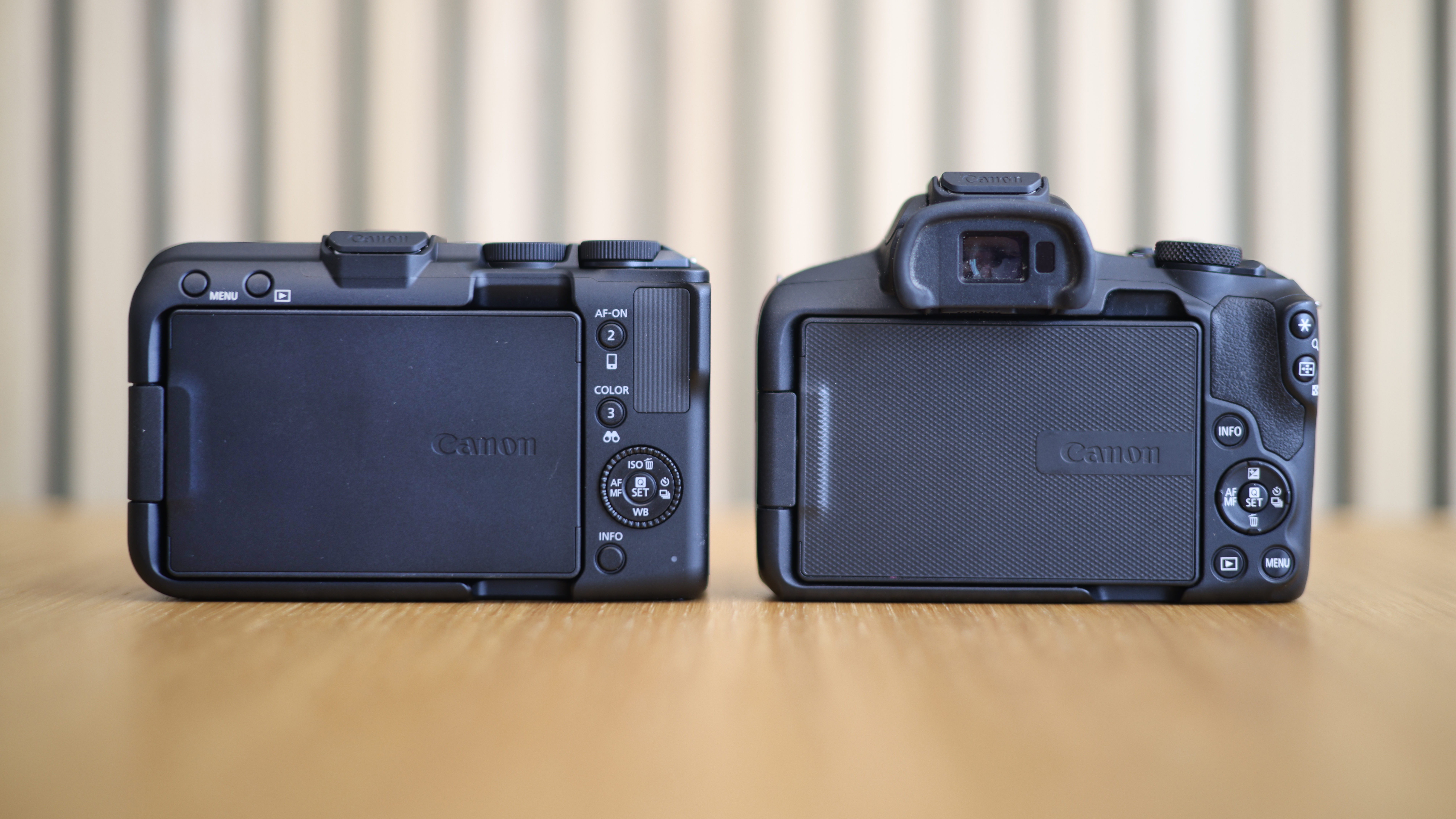

You might also like…
Take a look at the best lenses for the Canon EOS R50, along with the best Canon RF lenses in general. If you're not sure whether either R50 is right for you, check out the best Canon cameras of all shapes and sizes.
Get the Digital Camera World Newsletter
The best camera deals, reviews, product advice, and unmissable photography news, direct to your inbox!

James has 22 years experience as a journalist, serving as editor of Digital Camera World for 6 of them. He started working in the photography industry in 2014, product testing and shooting ad campaigns for Olympus, as well as clients like Aston Martin Racing, Elinchrom and L'Oréal. An Olympus / OM System, Canon and Hasselblad shooter, he has a wealth of knowledge on cameras of all makes – and he loves instant cameras, too.
